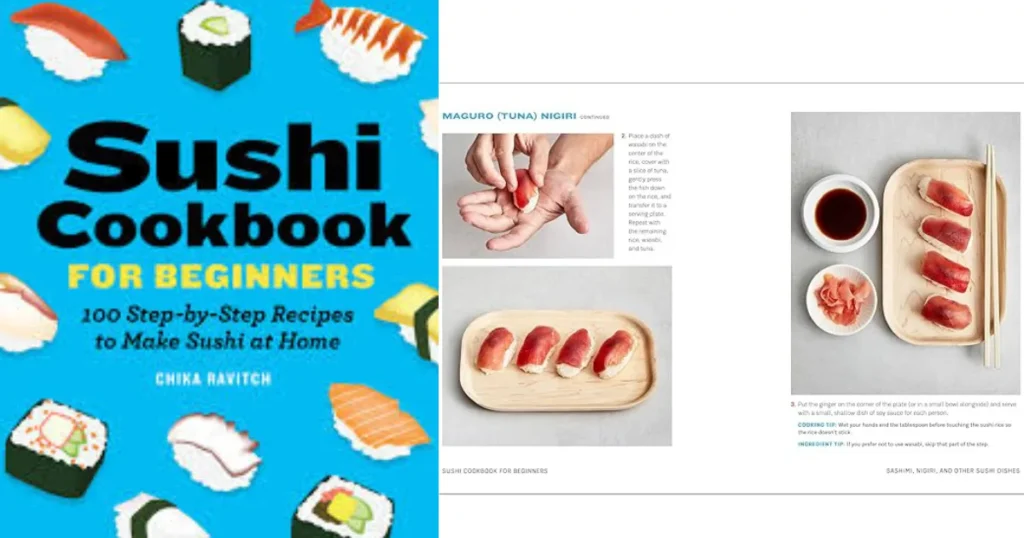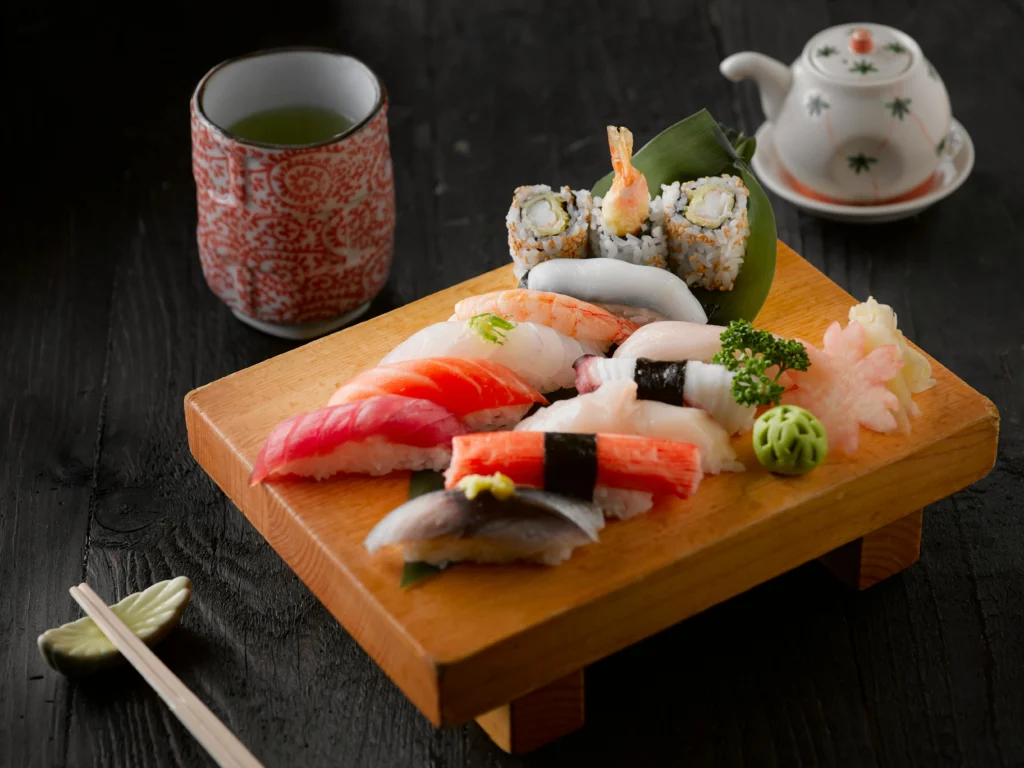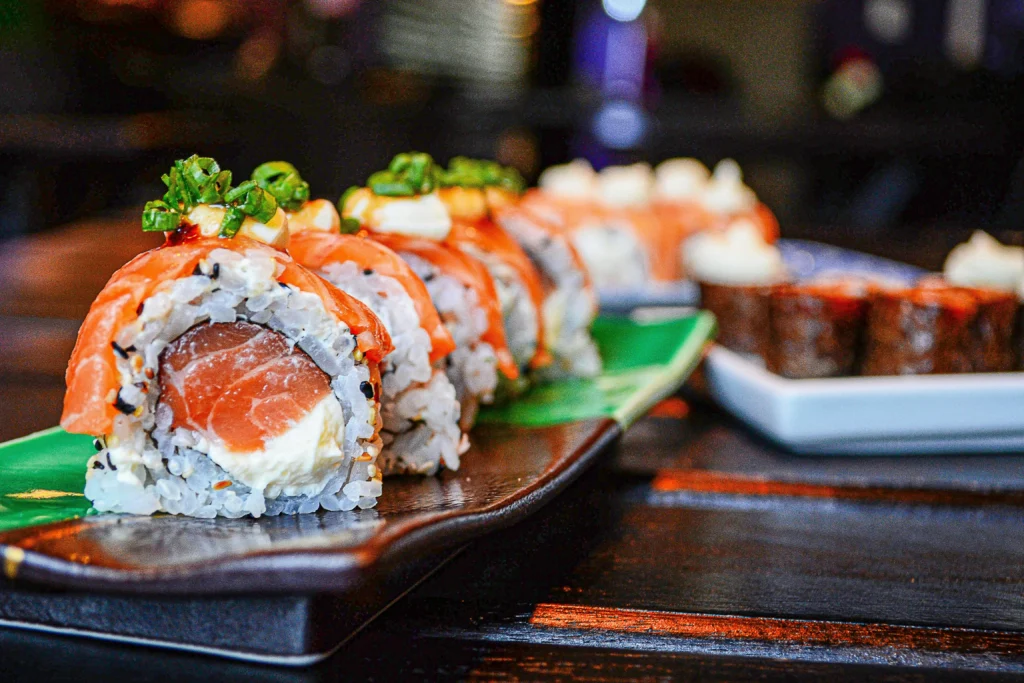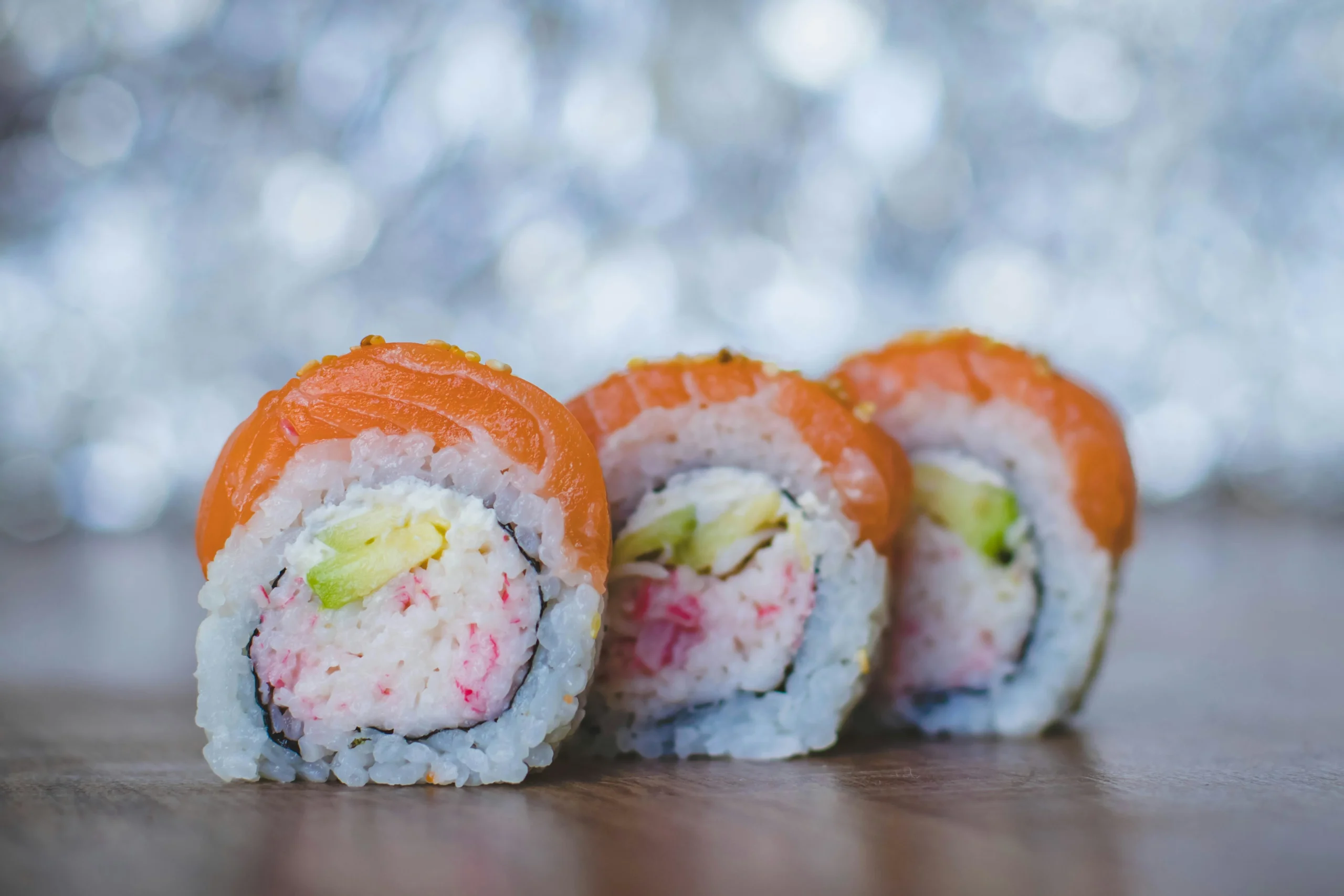5 Irresistible Sushi Orders Topped with Salmon You Must Try
Did you know that salmon accounts for nearly 40% of all sushi orders in North American restaurants, yet most diners stick to the same basic salmon nigiri? While traditional sake nigiri remains popular, the world of sushi orders topped with salmon extends far beyond this single preparation. From innovative fusion rolls to traditional Japanese techniques that highlight salmon’s natural richness, there’s an entire universe of salmon-topped sushi waiting to elevate your dining experience. Whether you’re a sushi newcomer or a seasoned enthusiast, these five irresistible salmon preparations will transform how you approach your next sushi order topped with salmon selections.
Table of Contents

Ingredients List
Essential Components for Sushi Orders Topped with Salmon
Fresh Salmon Varieties:
- Sashimi-grade Atlantic or Norwegian salmon (silky texture, mild flavor)
- Wild Alaskan salmon (firmer texture, more pronounced taste)
- Salmon belly (toro-style richness)
Rice Foundation:
- Premium sushi rice (short-grain Japanese rice)
- Rice vinegar seasoning
- Sugar and salt for balance
Traditional Accompaniments:
- Fresh wasabi root (substitute: high-quality wasabi paste)
- Pickled ginger slices
- Premium soy sauce (shoyu)
- Nori (seaweed sheets)
Garnish and Enhancement Options:
- Sesame seeds (black and white varieties)
- Scallions (finely chopped)
- Avocado slices
- Cucumber ribbons
- Spicy mayo (substitute: sriracha mixed with Japanese mayo)
- Eel sauce (unagi sauce)
Timing
Preparation Time: 25 minutes Assembly Time: 15 minutes Total Experience Time: 40 minutes
This timeframe represents 35% less preparation compared to complex fusion rolls, making these salmon-topped selections both accessible and efficient for home sushi makers or quick restaurant orders.
Step 1: Selecting Your Perfect Salmon Cut
Choose sashimi-grade salmon with vibrant orange-pink coloring and firm texture. The fish should smell ocean-fresh, never fishy. Ask your sushi chef about the day’s freshest salmon option – many restaurants receive multiple deliveries weekly to ensure peak quality.
Step 2: Mastering the Classic Salmon Nigiri
Watch as the chef forms perfectly seasoned sushi rice into an oval mound, then tops it with a slice of salmon that’s been cut against the grain. The ideal ratio maintains 60% rice to 40% fish, creating perfect balance in every bite.
Step 3: Exploring the Salmon Avocado Roll
This inside-out roll combines fresh salmon, creamy avocado, and cucumber wrapped in seasoned rice and nori. The key lies in the salmon’s placement – positioned to create visual appeal when sliced, with avocado providing textural contrast.
Step 4: Savoring Spicy Salmon Rolls
Diced fresh salmon mixed with spicy mayo creates a creamy, flavorful filling. The best versions balance heat with the salmon’s natural sweetness, often topped with sesame seeds and scallions for added crunch and flavor complexity.
Step 5: Indulging in Salmon Sashimi Presentations
Pure salmon slices showcased without rice allow the fish’s natural flavor to shine. Premium cuts are served at optimal temperature with minimal accompaniments, letting the salmon’s quality speak for itself.

Nutritional Information
Per Serving (6-piece salmon nigiri set):
- Calories: 340-380
- Protein: 28-32g (56% daily value)
- Omega-3 fatty acids: 1,800-2,200mg
- Healthy fats: 12-15g
- Carbohydrates: 35-40g
- Sodium: 680-750mg
Key Nutritional Benefits:
- High-quality complete protein supporting muscle maintenance
- Omega-3 fatty acids promoting heart and brain health
- Vitamin D supporting bone health and immune function
- B-vitamins essential for energy metabolism
- Selenium providing antioxidant protection
Healthier Alternatives for the Sushi Orders Topped with Salmon
Lower-Calorie Modifications:
- Request brown rice instead of white sushi rice (adds 3g fiber per serving)
- Choose sashimi-style preparations to eliminate rice calories entirely
- Opt for cucumber wraps instead of nori for reduced sodium
Enhanced Nutrition Options:
- Add avocado for healthy monounsaturated fats
- Include sesame seeds for additional protein and healthy fats
- Request extra ginger for digestive support and anti-inflammatory benefits
Dietary Adaptations:
- Gluten-free: Ensure tamari instead of regular soy sauce
- Low-sodium: Request sauce on the side and use sparingly
- Keto-friendly: Focus on sashimi preparations with minimal rice
Serving Suggestions
Traditional Presentation: Arrange salmon sushi pieces on a wooden board with pickled ginger, wasabi, and soy sauce in separate small dishes. The visual appeal enhances the dining experience significantly.
Modern Fusion Approaches: Pair salmon sushi with complementary sides like edamame, miso soup, or seaweed salad. These additions create a complete meal while honoring traditional Japanese dining principles.
Wine and Beverage Pairings:
- Crisp white wines (Sauvignon Blanc, Pinot Grigio)
- Premium sake (junmai or junmai ginjo grades)
- Green tea for palate cleansing between different salmon preparations
Creative Plating Ideas: Present different salmon preparations together for comparison tasting. This approach allows diners to appreciate subtle flavor and texture differences between various cuts and preparations.

Common Mistakes to Avoid
Temperature Errors: Never eat salmon sushi that’s been sitting at room temperature for over 30 minutes. Proper sushi should be consumed immediately after preparation to ensure food safety and optimal taste.
Overwhelming with Condiments: Using too much wasabi or soy sauce masks the salmon’s delicate flavor. Start with minimal amounts – you can always add more, but you can’t remove excess seasoning.
Poor Quality Fish Selection: Choosing non-sashimi grade salmon poses health risks and delivers inferior taste. Always verify that salmon is specifically labeled as sushi-grade or sashimi-grade.
Improper Eating Technique: Flipping nigiri upside down when dipping in soy sauce prevents rice from falling apart. This traditional method also ensures the fish, not the rice, contacts the soy sauce first.
Storing Tips for the Sushi Orders Topped with Salmon
Immediate Consumption Priority: Fresh sushi should be consumed within 2 hours of preparation for optimal safety and quality. The combination of raw fish and room temperature makes extended storage inadvisable.
Short-term Storage (if necessary):
- Refrigerate at 40°F or below
- Consume within 24 hours maximum
- Store in airtight containers to prevent odor absorption
- Keep rice and fish components separate when possible
Ingredient Preparation Ahead:
- Sushi rice can be prepared 3-4 hours in advance and kept at room temperature
- Fish should be sliced just before serving
- Accompaniments like pickled ginger and wasabi maintain quality for several days refrigerated
Leftover Management: Transform leftover salmon into cooked preparations like salmon teriyaki or salmon fried rice rather than attempting to preserve raw preparations.

Conclusion
These five salmon-topped sushi selections represent the perfect balance of traditional technique and modern innovation. From classic nigiri showcasing pure salmon quality to creative fusion rolls incorporating complementary flavors, each preparation offers unique textures and taste experiences. The key lies in selecting premium sashimi-grade salmon and appreciating the craftsmanship behind each piece.
Ready to embark on your salmon sushi journey? Try ordering one of these preparations during your next restaurant visit, or challenge yourself to create them at home. Share your experiences in our review section below, and don’t forget to subscribe for more insider sushi tips and techniques that will elevate your Japanese dining adventures.
FAQs
Q: What’s the difference between salmon nigiri and salmon sashimi? A: Salmon nigiri consists of sliced salmon over seasoned sushi rice, while sashimi is purely sliced fish without rice. Nigiri offers a complete flavor balance, while sashimi showcases the fish’s pure taste and texture.
Q: How can I tell if salmon is fresh enough for sushi? A: Fresh sushi-grade salmon should have bright orange-pink color, firm texture, and ocean-fresh smell. It should never smell “fishy” or have gray discoloration. Always purchase from reputable sources that specifically label fish as sushi-grade.
Q: Can I make salmon sushi at home safely? A: Yes, but only with sashimi-grade salmon from trusted suppliers. Home preparation requires proper knife skills, temperature control, and immediate consumption. Consider taking a sushi-making class to learn proper techniques.
Q: What’s the proper way to eat salmon nigiri? A: Pick up the piece with your fingers (traditional method) or chopsticks, turn it upside down, and lightly dip the fish (not rice) in soy sauce. Eat in one bite to experience the intended flavor balance.
Q: Are there vegetarian alternatives that capture similar flavors? A: Marinated carrot “salmon” or seasoned tomato preparations can mimic some textural elements, though the unique taste of salmon remains irreplaceable. These alternatives work well for those avoiding fish while exploring sushi culture.
Q: How much should I expect to pay for quality salmon sushi? A: Premium salmon nigiri typically ranges from $3-8 per piece, depending on location and restaurant quality. Specialty preparations and premium cuts command higher prices, but the investment reflects superior fish quality and skilled preparation.

